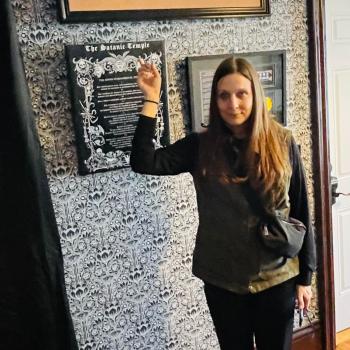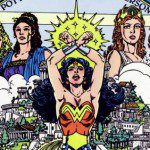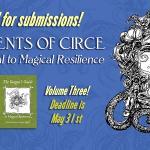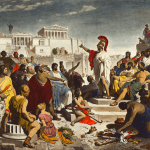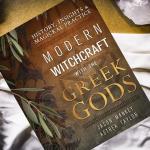 I read to escape, and/or I read to learn. When I can do both at the same time an author has achieved something special. The four books highlighted below mostly managed to achieve that feat, though with differing levels of success. If you are looking for a good read this holiday season I can’t recommend three of these four books enough and depending on where you stand with the subject matter, I sort of recommend the fourth as well.
I read to escape, and/or I read to learn. When I can do both at the same time an author has achieved something special. The four books highlighted below mostly managed to achieve that feat, though with differing levels of success. If you are looking for a good read this holiday season I can’t recommend three of these four books enough and depending on where you stand with the subject matter, I sort of recommend the fourth as well.
When I was originally putting this post together I meant to include it as a part of my annual holiday shopping series, but held off. Instead of tiny little reviews I wanted to include a bit of substance, and since my holiday post spiraled into the surprisingly long article Pagan Things Made By Pagans For Pagans, splitting them up seemed like the way to go. I think all of the books highlighted here are important and fit into a greater Pagan worldview to some degree. If you pick one of them up, I hope you enjoy it as much as I did , if not more.
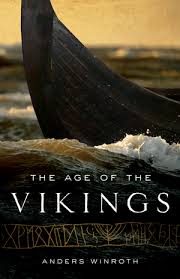 The Age of the Vikings by Anders Winroth I feel as if I should preface this review with a disclaimer. I’ve never been all that attached to the Norse gods and I’ve never been all that interested in the Vikings either. All that being said, I loved this book. It was refreshing to see a scholarly approach to the Norse that maintained a high degree of readability. Too many scholars write in a nearly impenetrable way, Winroth is the exact opposite. His prose is sharp and compelling, and often left me wanting more (in a good way).
The Age of the Vikings by Anders Winroth I feel as if I should preface this review with a disclaimer. I’ve never been all that attached to the Norse gods and I’ve never been all that interested in the Vikings either. All that being said, I loved this book. It was refreshing to see a scholarly approach to the Norse that maintained a high degree of readability. Too many scholars write in a nearly impenetrable way, Winroth is the exact opposite. His prose is sharp and compelling, and often left me wanting more (in a good way).
Much like nearly every ancient pagan religious group Winroth succeeds in detailing how much we don’t know. Things that we assume are correct about Norse Religion sometimes aren’t, and The Eddas were both influenced by Christianity. Coming into this book I assumed we knew more about Norse Religion than Winroth suggests . . . . it’s just another example of how much has been lost over the last 2000 years.
Age of the Vikings captures the wanderlust of its subjects, placing the Vikings all over Europe and the Middle East. Winroth’s Norse aren’t just raiders or farmers, they are merchants, poets, warriors, and sailors. They were also often malnourished and unhealthy, and some of the pictures painted by Winroth is bleak. (I think he especially captured the sheer isolation that would come from living in a place like Greenland.) The lives of the Vikings often make for romantic fonder and good television shows, but their lives were far more complicated than those mediums let on.
 Season of the Witch: How the Occult Saved Rock and Roll by Peter Bebergal Perhaps I’m too close to the subject material, but Season of the Witch was a disappointment. Is it the best book available on rock and roll and the occult? Possibly, but that’s not saying very much. Many writers who tackle this particular subject tend to stumble for two very different reasons. The first is that they don’t understand “the occult.” These are the authors who write “Aleister Crowley was a Satanist.” Bebergal is not in that particular camp, but he’s obviously not a rock historian, and that’s where he stumbles.
Season of the Witch: How the Occult Saved Rock and Roll by Peter Bebergal Perhaps I’m too close to the subject material, but Season of the Witch was a disappointment. Is it the best book available on rock and roll and the occult? Possibly, but that’s not saying very much. Many writers who tackle this particular subject tend to stumble for two very different reasons. The first is that they don’t understand “the occult.” These are the authors who write “Aleister Crowley was a Satanist.” Bebergal is not in that particular camp, but he’s obviously not a rock historian, and that’s where he stumbles.
Again, I’m way too close to the source material here, but no mention of N.I.B. when discussing Black Sabbath’s Devil-based lyrics? (The line: “My name is Lucifer please take my hand” is just begging for attention.) In a similar vein where’s Sabbath’s After Forever? That’s a song so Christian it could almost be sung at an Evangelical Church (though it might need a different musical arrangement). When discussing the spirituality of Sabbath these are essential songs, and they are completely M.I.A.
Bebergal also spends large chunks of the book simply waxing poetically, wasting large amounts of space that could have been used to include artists like Ronnie James Dio, Tori Amos, and Marc Bolan of T. Rex. I’m not even sure how one has a discussion about Dungeons & Dragons inspired fantasy-rock without mentioning Dio and Ritchie Blackmore’s Rainbow. There’s also the problem of sources, many of which are poor for this sort of project. Take for example Led Zeppelin. Bebergal uses Stephen Davis’s Hammer of the Gods for his primary background information on the band. Hammer is fun little read in a TMZ-type of way, but much better is Mick Wall’s When Giants Walked the Earth, a book that discusses Crowley competently and intelligently.
I don’t want to say this is a bad book, because it’s not, but it felt half finished to me. There was so much more that could have (and should have) been added. As an introduction to the occult’s influence on rock music, it’s a fair starting point, but certainly not the last word on the subject. Let’s move on . . . .
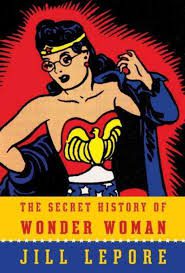 The Secret History of Wonder Woman by Jill Lepore This might be my favorite book of 2014, that’s just how damn good it is. Based on the cover I was expecting a history of the character Wonder Woman (something like Larry Tye’s Superman), but what I got was much better. Lepore’s book is sort of a biography of Wonder Woman’s creator (William Moulton Marston who wrote under the pen-name Charles Moulton) but it’s also a look at some of the influences that went into creating the character.
The Secret History of Wonder Woman by Jill Lepore This might be my favorite book of 2014, that’s just how damn good it is. Based on the cover I was expecting a history of the character Wonder Woman (something like Larry Tye’s Superman), but what I got was much better. Lepore’s book is sort of a biography of Wonder Woman’s creator (William Moulton Marston who wrote under the pen-name Charles Moulton) but it’s also a look at some of the influences that went into creating the character.
One of those influences was Margaret Sanger, an early birth control advocate whose Birth Control Council of America eventually became Planned Parenthood. That Wonder Woman is related to first wave feminism shouldn’t come as a surprise, that Sanger was the aunt of Marston’s partner Olive Byrne might. I’m not sure I want to credit Marston as an early adopter of polyamory, but he did live happily with his wife Elizabeth Holloway and Byrne for much of his adult life (even fathering children with both ladies). After Marston’s untimely death Holloway and Byrne continued to live together for nearly forty years.
Anyone who is interested in the history of Modern Paganism is probably aware that it often dovetails with the history of Modern Feminism, and that’s easy to see in Wonder Woman. That so many pioneering figures turn up again in the origins of Wonder Woman gave me a new appreciation for the character. Marston’s version of Wonder Woman has come under fire in recent years for its fascination with tying its heroine up in ropes and/or chains, but Lepore paints a more positive picture of those early stories. I can’t rave about this book highly enough, it’s perfect for fans of Pagan history and comic books.
 Heirs to Forgotten Kingdoms: Journeys Into the Disappearing Religions of the Middle East by Gerard Russell Heirs is many things, it’s part travelogue and part history. It’s also a window into the rapidly changing Middle East and the consequences of the “Arab Spring” on those who practice minority faiths. It’s also impossible to put down once begun, along with Wonder Woman this is one of my favorite books of the year.
Heirs to Forgotten Kingdoms: Journeys Into the Disappearing Religions of the Middle East by Gerard Russell Heirs is many things, it’s part travelogue and part history. It’s also a window into the rapidly changing Middle East and the consequences of the “Arab Spring” on those who practice minority faiths. It’s also impossible to put down once begun, along with Wonder Woman this is one of my favorite books of the year.
When many of us imagine “The Middle East” we think of Islam, Judaism, and Christianity, but it’s home to a multitude of religious traditions. Some of those traditions date back to ancient paganisms and Christianity’s earliest competitors. Most of us are well aware of the Yazidis and their peacock-god Melek Taus due to the attempted genocide of those people by ISIL, but there’s more to the story than that. Russell speculates on the origins of Yazidi religion and takes it back to the worship of Mitra (Mithras). We think of such traditions as either extinct or re-invented, here’s a piece of that tradition that’s never been extinguished.
In addition to the religious insights found in Russell’s book there’s also a large degree of heartbreak. The traditions he’s writing about are rapidly disappearing before our eyes. Not just the Yazidis, but also the (pagan) Kalasha of Pakistan/Afghanistan who now number less than 5000 adherents. Some of the traditions he writes about have experienced a renaissance of sorts (there are now about 750 Samaritans, up from about 200 at the end of World War II), but there’s not a lot of hope for the future.
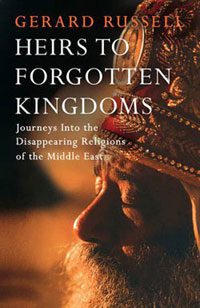 Any book that that links contemporary traditions directly to ancient paganisms is of interest to the larger Pagan Community, and Russell does just that throughout his book. Even traditions we don’t generally look at as having much pagan left in them (like Coptic Christianity) still contain a few traces. We tend to think that the religions of Ancient Babylon and/or Alexander’s Greece didn’t come down to the present-day in an unbroken chain, but they sort of did, and that’s just some of the fascinating stuff in this book. There’s also a lot about how pagan faiths merged with Islam to create something different, new, and stronger than what existed before.
Any book that that links contemporary traditions directly to ancient paganisms is of interest to the larger Pagan Community, and Russell does just that throughout his book. Even traditions we don’t generally look at as having much pagan left in them (like Coptic Christianity) still contain a few traces. We tend to think that the religions of Ancient Babylon and/or Alexander’s Greece didn’t come down to the present-day in an unbroken chain, but they sort of did, and that’s just some of the fascinating stuff in this book. There’s also a lot about how pagan faiths merged with Islam to create something different, new, and stronger than what existed before.
This is not a scholarly book, though Russell generally uses good sources. It plays out more as a travelogue, with Russell having met every group he profiles in his book. If you are simply looking for information this isn’t your best bet, but as a snapshot of a wider world there’s nothing like it. Reading about Russell’s trips to some of these rather isolated areas is also an adventure in and of its self. There are places I’d like to visit, but will never have the courage to visit given the present circumstances.
The book does suffer from a rather Judeo-Christian world view. No, Abraham was not a real person, and writing as if he was is probably not helpful. However given the general readership this book is likely to attract it makes sense. Since Heirs is not written for scholarly consumption, some of the Bible references do provide a bit of historical framework. That little quibble aside, this is a timely work and anyone with an interest in comparative religion and the survival of ideas will want to read this.
Happy Reading!






